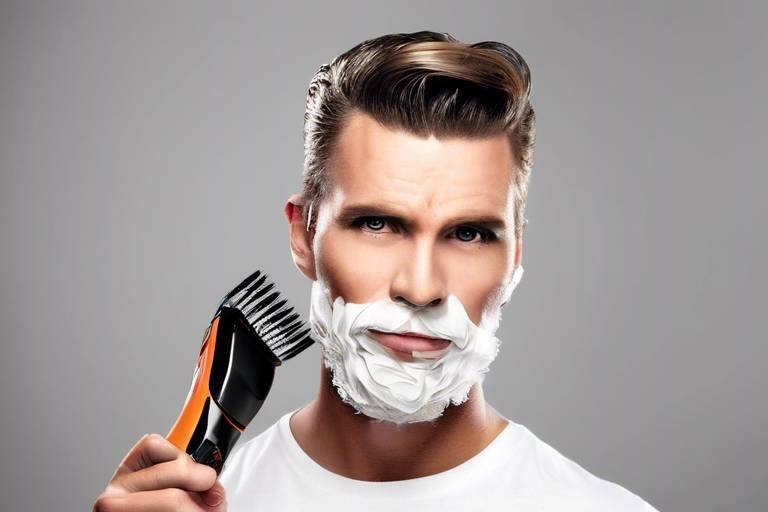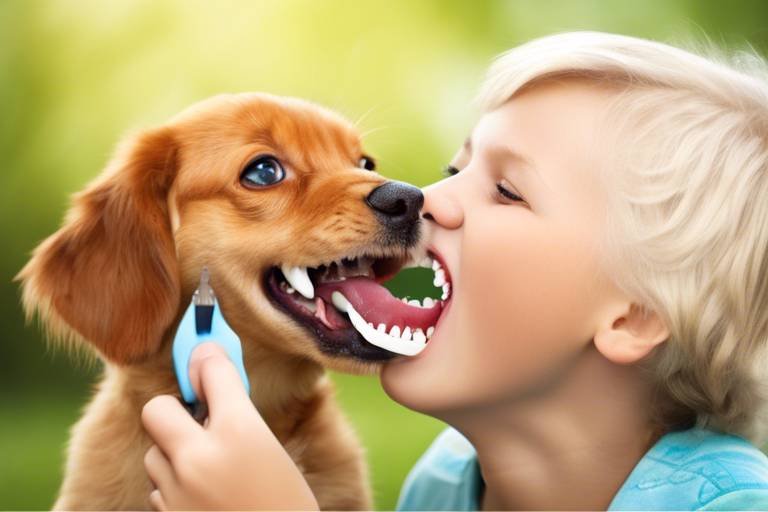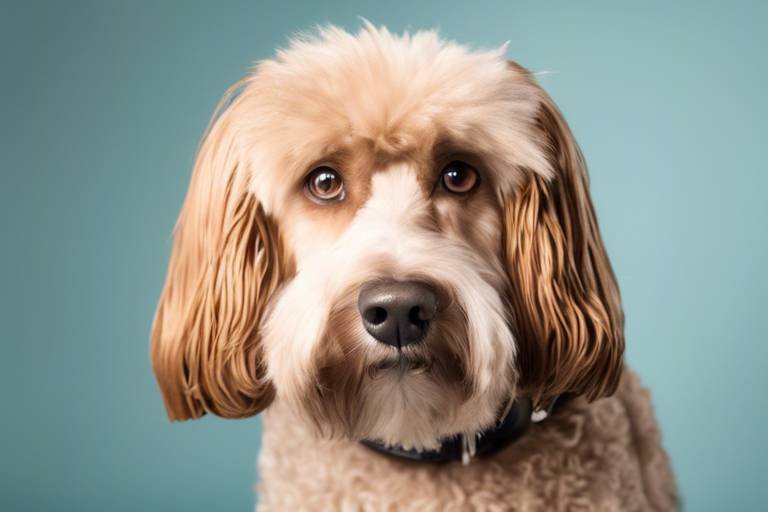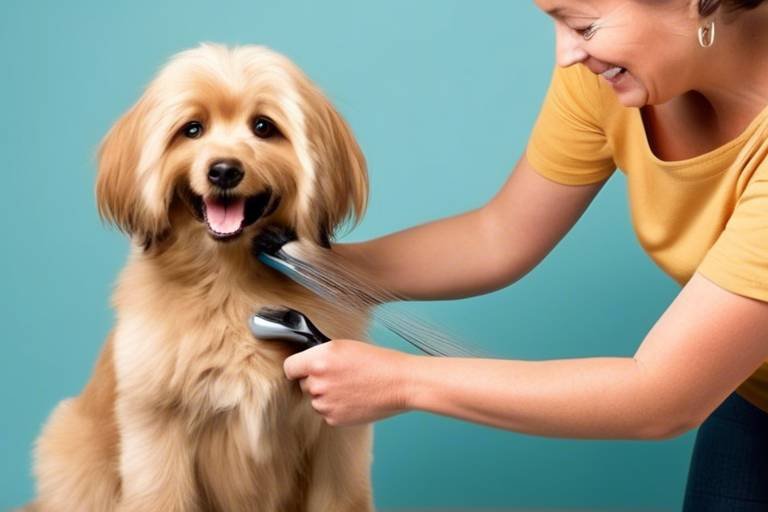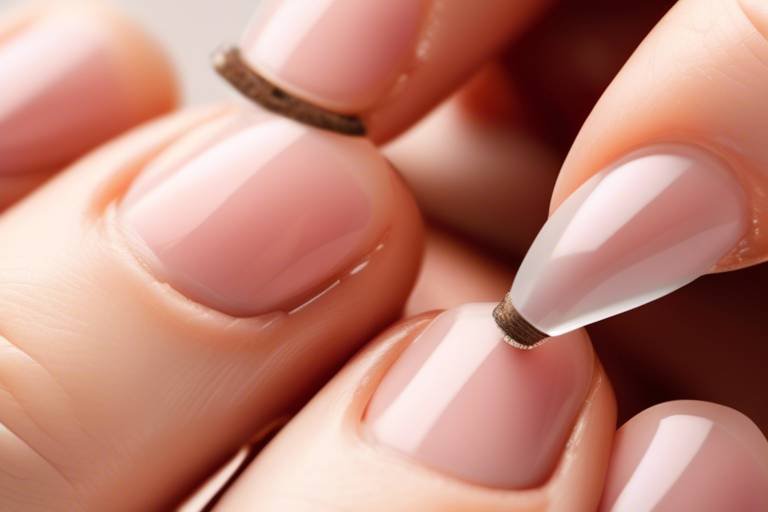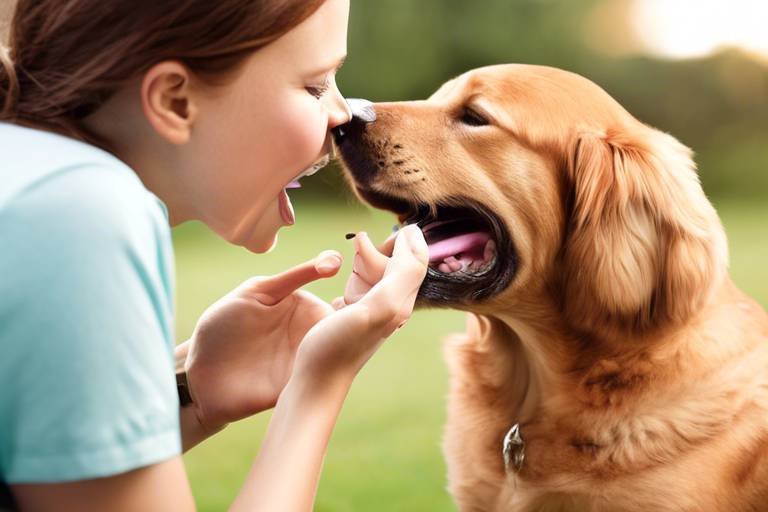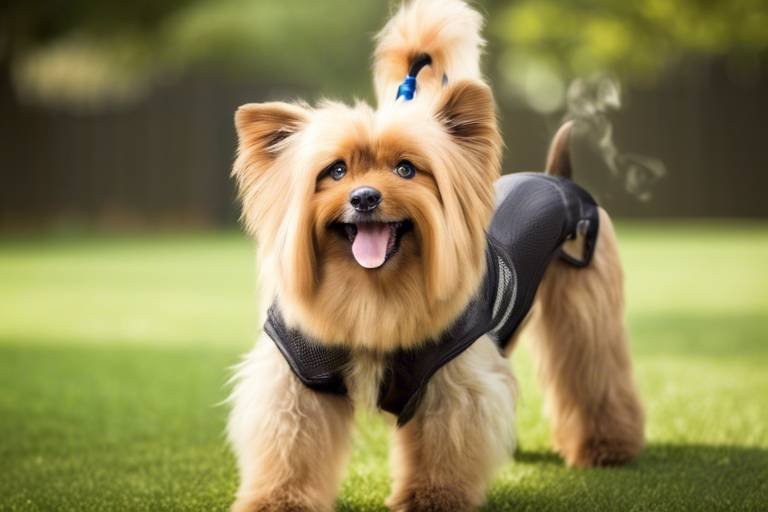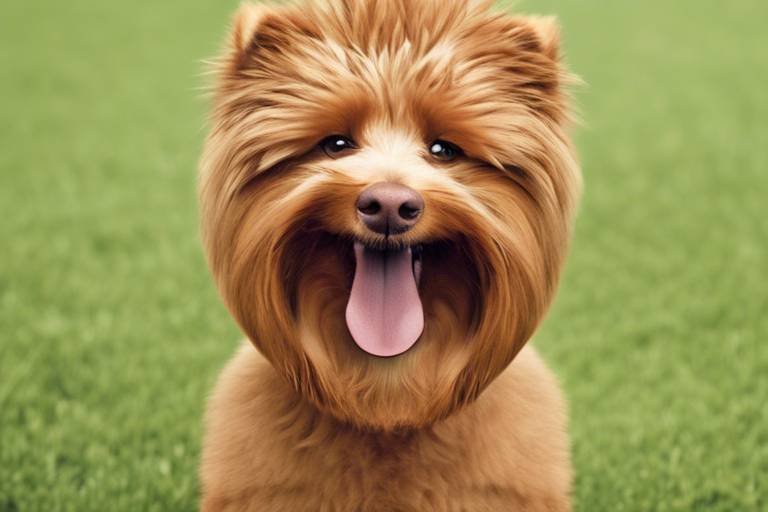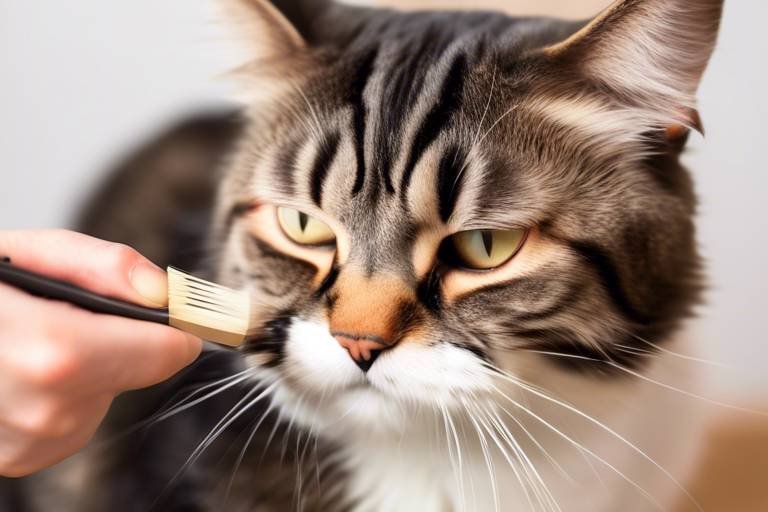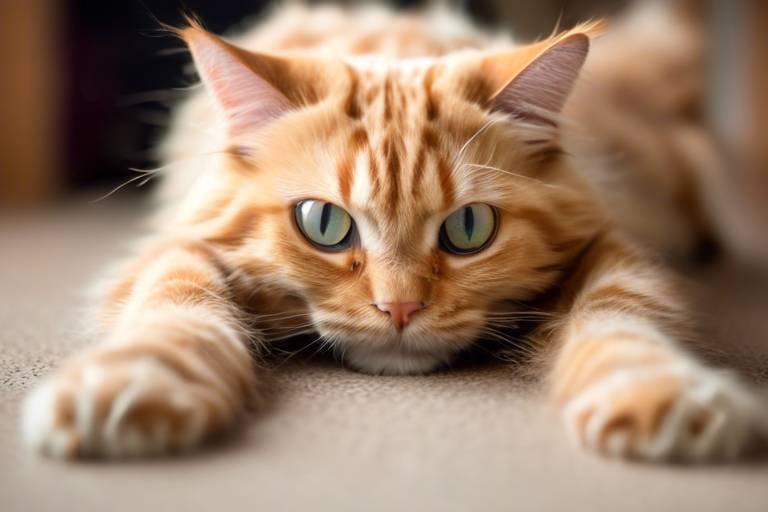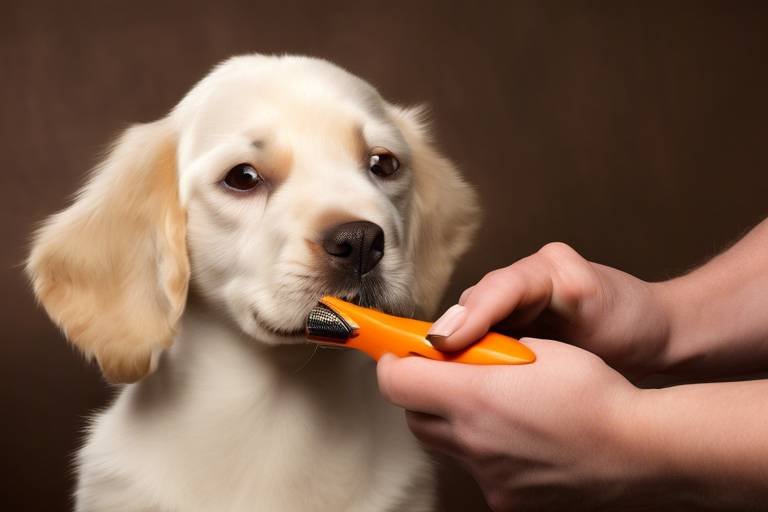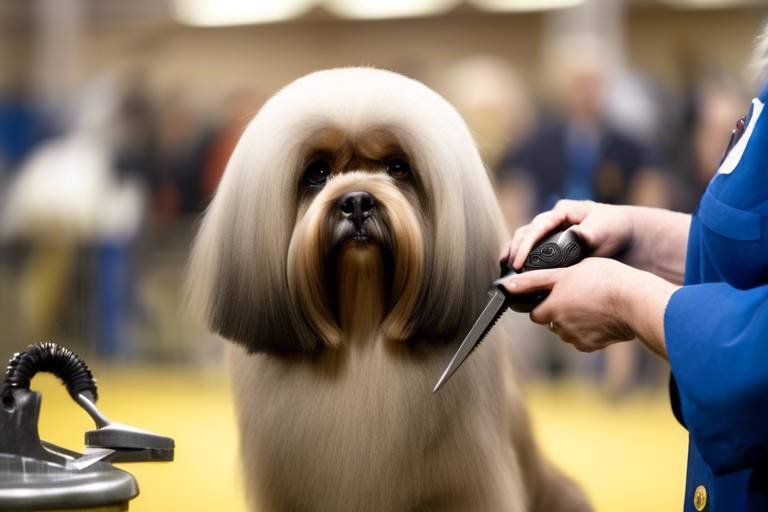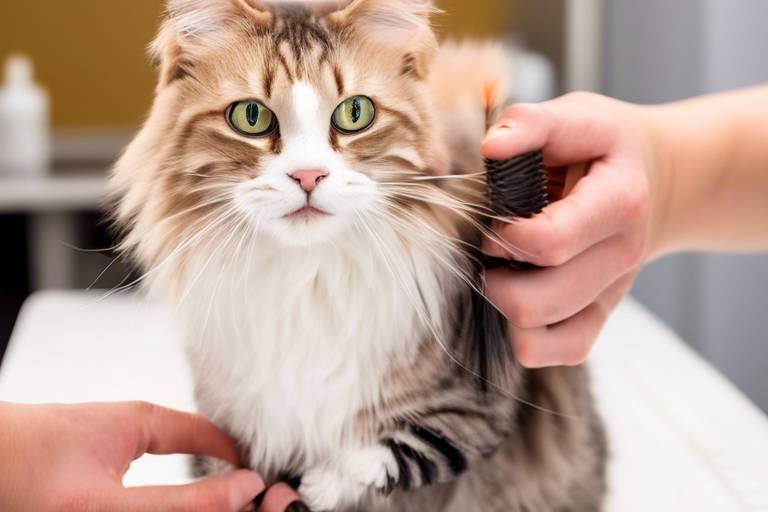DIY Grooming - When to Call a Professional
When it comes to taking care of our furry friends, many pet owners often find themselves at a crossroads: Should I tackle grooming at home, or is it time to call in the professionals? This dilemma is not just about convenience; it’s about the well-being of your pet. DIY grooming can be a rewarding experience, offering you the chance to bond with your pet while saving some cash. However, it also comes with its own set of challenges and risks that can sometimes outweigh the benefits. In this article, we will explore the delicate balance between self-grooming and seeking professional help, equipping you with insights on techniques, tools, and the situations when a professional groomer becomes essential for your pet's health and happiness.
DIY grooming is all about using basic techniques to maintain your pet's hygiene and appearance without relying on professional services. It's like cooking at home versus dining out; while both have their perks, they cater to different needs. The benefits of grooming your pet at home include cost savings, convenience, and the opportunity to bond with your pet. However, it’s important to recognize the challenges that come with it. For instance, not all pet owners have the experience or knowledge to groom effectively, which can lead to mishaps such as skin irritation or even injury. Additionally, some pets may not react well to being groomed at home, especially if they are not accustomed to it. Therefore, it’s crucial to weigh these factors carefully before deciding to go the DIY route.
Having the right tools is crucial for effective DIY grooming. Think of it as a painter needing the right brushes and colors to create a masterpiece. Without the proper equipment, your efforts may fall short. Here are some must-have grooming supplies that will help ensure a safe and efficient grooming experience:
| Tool | Purpose |
|---|---|
| Brush | Removes loose fur and prevents matting |
| Clippers | For trimming fur, especially in long-haired breeds |
| Shampoo | For bathing your pet and maintaining coat health |
| Ear Cleaner | For maintaining ear hygiene |
| Toothbrush & Paste | For dental care to prevent plaque build-up |
Different breeds require specific brushes for optimal grooming. For example, a Golden Retriever will need a different brush than a French Bulldog. Choosing the right brush is essential to avoid skin irritation and ensure a healthy coat. When selecting a brush, consider your pet's coat type:
- Long-haired breeds: A slicker brush or a wide-toothed comb can work wonders in preventing matting.
- Short-haired breeds: A rubber grooming mitt or a bristle brush can help remove loose fur and distribute natural oils.
Proper brushing techniques can prevent matting and reduce shedding. For long-haired pets, start at the tips of the fur and work your way up to the roots, using gentle strokes to avoid pulling. For short-haired breeds, a circular motion can help lift dirt and loose fur. Remember, grooming is not just about cleanliness; it’s an excellent opportunity for bonding with your pet. Take your time, and make it a positive experience for both of you!
Regular ear and dental care is vital for your pet's health. To clean your pet's ears, use a vet-recommended ear cleaner and a cotton ball. Gently wipe the outer ear, avoiding deep insertion, which can cause injury. For dental care, use a soft toothbrush and toothpaste specifically designed for pets. Brush in a circular motion, focusing on the gum line. Establishing a routine for these tasks can keep your pet healthy and happy.
Knowing when to seek professional grooming services is essential for your pet's health. Look out for signs such as:
- Severe matting that you can't manage
- Skin irritations or infections
- Excessive shedding or odor
- Behavioral changes during grooming
If you notice any of these signs, it may be time to call in a professional groomer who can provide the expertise and care your pet needs.
Certain breeds have unique grooming needs. For instance, a Poodle requires regular trimming to maintain its iconic look, while a Beagle may only need occasional brushing. Understanding these breed-specific grooming requirements can help you manage your pet’s needs effectively at home or through professionals. It’s like knowing the specific dietary needs of different animals; tailored care is always the best approach.
Long-haired breeds often require more frequent grooming. The specific challenges associated with long fur include tangling and matting, which can lead to discomfort for your pet. Regular brushing is essential, and it’s advisable to schedule professional grooming every few months to keep their coat in top shape. Between visits, ensure you’re keeping up with daily brushing to prevent any issues.
Short-haired breeds may need less grooming, but they still require care. Regular brushing can help reduce shedding and keep their coat healthy. If you notice excessive shedding or skin issues, it might be beneficial to consult a professional groomer. They can provide insights and care that you may not be able to achieve at home.
Q: How often should I groom my pet at home?
A: It depends on the breed and coat type. Long-haired breeds may require daily grooming, while short-haired breeds can be groomed weekly.
Q: Can I use human shampoo on my pet?
A: No, human shampoo can be too harsh for pets. Always use a pet-specific shampoo for bathing.
Q: What should I do if my pet doesn't like being groomed?
A: Start slowly and make the experience positive with treats and praise. If issues persist, consider seeking professional help.
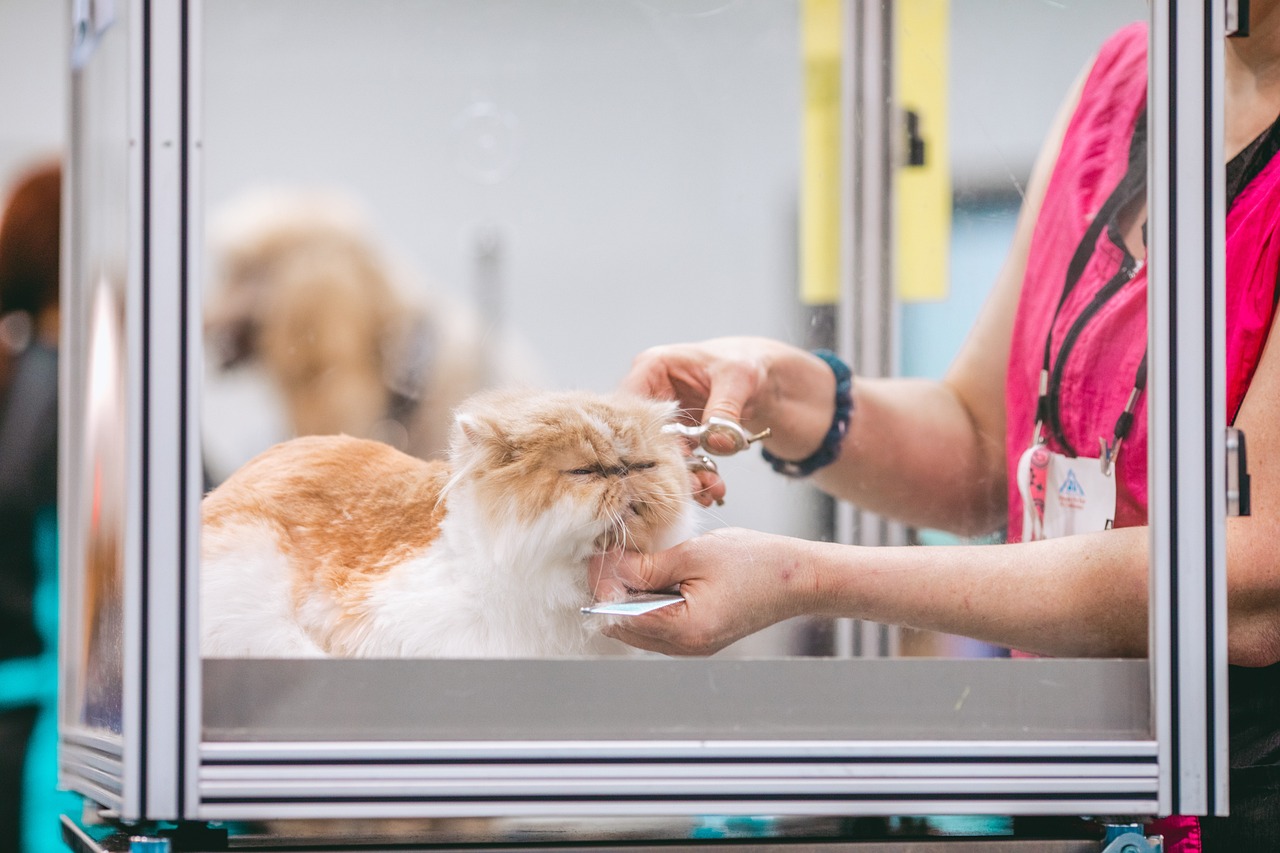
Understanding DIY Grooming
When it comes to grooming our beloved pets, many of us are torn between the convenience of DIY grooming and the assurance of professional help. DIY grooming can be a rewarding experience, allowing you to bond with your furry friend while saving money. However, it’s essential to weigh the benefits against the challenges that come with it.
One of the most significant advantages of grooming your pet at home is the cost savings. Professional grooming services can add up quickly, especially if you have a pet that requires regular grooming sessions. By investing in some basic tools and learning a few techniques, you can maintain your pet's hygiene and appearance without breaking the bank. Plus, there’s something incredibly satisfying about seeing your pet look and feel their best after a grooming session you handled yourself.
However, DIY grooming isn’t without its challenges. For starters, not everyone is comfortable handling grooming tools, and some pets may not be as cooperative as we’d like. It can be a bit of a wrestling match to get your cat or dog to sit still while you try to brush their fur or trim their nails. Additionally, there's a risk of injury if you don't know what you're doing. For example, using the wrong type of clipper or brush can lead to nicks and cuts, or even worse, skin irritations.
Furthermore, certain breeds have specific grooming needs that might require a professional touch. For instance, if you own a breed with a complicated coat type, like a Poodle or a Shih Tzu, you might find it challenging to achieve the same level of grooming that a professional groomer can provide. They have the experience and tools necessary to handle even the most stubborn mats and tangles.
In summary, while DIY grooming can be a great way to save money and bond with your pet, it’s essential to recognize your limitations and your pet’s needs. Sometimes, a little professional help can go a long way in ensuring your pet remains healthy and happy. Understanding when to pick up the clippers and when to call in the pros is key to maintaining that perfect balance.

Essential Tools for Home Grooming
When it comes to DIY grooming, having the right tools is absolutely crucial. Imagine trying to cook a gourmet meal without the right utensils; it’s just not going to happen! Similarly, grooming your pet effectively requires a set of essential tools that will make the process smoother and more enjoyable for both you and your furry friend. First and foremost, you’ll need a good quality brush. Brushes come in various shapes and sizes, and selecting the right one can make a world of difference in how your pet's coat looks and feels. For example, a slicker brush is fantastic for removing tangles and mats in long-haired breeds, while a bristle brush works wonders for short-haired pets.
Next on the list is a pair of reliable clippers. If your pet has a thick or long coat, clippers can save you a lot of time and energy, especially if you’re tackling a big grooming job. Just like you wouldn’t use a butter knife to carve a turkey, you shouldn’t skimp on quality when it comes to grooming clippers. Look for clippers that are specifically designed for pets, as they are quieter and less intimidating for your furry companion. Additionally, having a good set of grooming scissors can help you tidy up those hard-to-reach areas, like around the paws and face.
Let’s not forget about shampoos and conditioners! Using the right products can enhance your pet's coat and skin health. Opt for gentle, pet-safe formulas that cater to your pet's specific needs—be it sensitive skin or a coat that needs extra shine. Always remember to do a patch test first, as some pets can be sensitive to new products. After all, you wouldn’t want your pet to have an adverse reaction to something you thought would be beneficial!
In addition to these primary tools, there are a few more items that can make your grooming experience easier and more effective. Consider investing in a de-shedding tool if your pet tends to shed a lot. This tool can help manage excess fur and reduce the amount of hair left around your home. You might also want to have some ear cleaning solution and dental care supplies on hand, as maintaining your pet's overall hygiene is just as important as their coat.
To summarize, here’s a quick table of essential grooming tools:
| Tool | Purpose |
|---|---|
| Brush | Removes tangles and mats |
| Clippers | For cutting and trimming fur |
| Grooming Scissors | For detailed trimming |
| Shampoo/Conditioner | For cleaning and conditioning the coat |
| De-shedding Tool | Reduces shedding |
| Ear Cleaning Solution | Maintains ear hygiene |
| Dental Care Supplies | Promotes dental health |
With these tools in your arsenal, you’ll be well-equipped to handle most grooming tasks at home. Just remember that while DIY grooming can be rewarding, it’s essential to stay aware of your pet’s comfort and well-being throughout the process. If things start to feel overwhelming or if your pet becomes anxious, don’t hesitate to reach out to a professional groomer for assistance.
Choosing the Right Brush
When it comes to grooming your furry friend, selecting the right brush is crucial for maintaining their coat and skin health. Just like humans have different hair types that require specific care, pets also have unique grooming needs based on their breed and coat type. Using the wrong brush can lead to discomfort, skin irritation, or even damage to their beautiful fur. So, how do you choose the right brush for your pet? Let's dive into the details!
First, it's important to understand the different types of brushes available and their specific purposes. For instance, if you have a long-haired breed like a Persian cat or a Golden Retriever, you'll need a brush that can effectively detangle and remove loose hair. A wide-toothed comb or a pin brush is often ideal for these breeds, as they can glide through the hair without causing pain or pulling. On the other hand, if your pet has a short-haired coat, a rubber grooming mitt or a bristle brush can work wonders, helping to remove dead hair and distribute natural oils for a shiny finish.
To make the selection process easier, here’s a quick comparison table of common brush types:
| Brush Type | Best For | Key Benefits |
|---|---|---|
| Pin Brush | Long-haired breeds | Detangles and removes loose hair |
| Bristle Brush | Short-haired breeds | Distributes oils and adds shine |
| Rubber Grooming Mitt | All breeds | Gentle massage and hair removal |
| Wide-toothed Comb | Curly or thick coats | Untangles knots without damage |
Now that you have an idea of the different brush types, consider your pet's coat condition. If your pet has matted fur, it might be best to consult a professional groomer before tackling it at home. Attempting to brush out severe mats can be painful for your pet and may lead to more serious issues. Remember, the goal of grooming is not just to make your pet look good, but also to keep them comfortable and healthy!
In addition to the type of brush, the frequency of grooming is also key. Regular brushing can help reduce shedding and keep your pet's coat in top condition. For long-haired breeds, daily brushing is often necessary, while short-haired breeds may only require grooming once a week. Establishing a routine not only helps maintain their coat but also strengthens the bond between you and your furry companion.
In conclusion, choosing the right brush for your pet is essential for effective grooming. Take the time to assess your pet's coat type and condition, and invest in the appropriate tools. With the right brush in hand and a little patience, you can keep your pet looking fabulous and feeling comfortable!
Brushing Techniques
When it comes to brushing your pet, the technique you use can make all the difference in the world. Just like how we enjoy a gentle massage after a long day, pets also appreciate a good brushing session that not only keeps their coat healthy but also strengthens the bond between you and your furry friend. The right brushing technique can prevent matting, reduce shedding, and even help you spot any skin issues before they become a problem.
First things first, always start by choosing a quiet, comfortable space where your pet feels relaxed. This will help create a positive experience for both of you. Depending on your pet's temperament, you might want to have some treats on hand to reward them for their cooperation. Now, let's dive into some effective brushing techniques:
- Divide and Conquer: Begin by sectioning off your pet's coat. This method allows you to focus on one area at a time, ensuring that you don’t miss any spots. For long-haired pets, work in smaller sections to avoid tangles.
- The Right Angle: Hold the brush at a 45-degree angle to your pet's skin. This position helps the bristles to penetrate the coat without causing discomfort.
- Gentle Strokes: Use long, gentle strokes, and always brush in the direction of hair growth. For dogs, this means brushing from head to tail, while for cats, it’s typically from head to tail as well. This not only prevents pulling on their skin but also feels soothing.
- Tackle Tangles with Care: If you encounter a mat or tangle, don’t yank it out. Instead, use your fingers to gently separate the fur, or consider using a dematting tool specifically designed for this purpose. Patience is key!
It’s also essential to pay attention to the undercoat, especially for double-coated breeds. Brushing the undercoat can significantly reduce shedding and keep your home fur-free. For pets with thicker coats, a slicker brush can work wonders, while a bristle brush is great for smoothing out the top layer.
Another important aspect of brushing is to check for any unusual lumps, bumps, or skin irritations during the process. This is a great opportunity to monitor your pet's health and catch any potential issues early on. If you notice anything concerning, don’t hesitate to consult your veterinarian.
Lastly, remember that brushing is not just about maintenance; it’s a fantastic way to bond with your pet. Take your time, talk to them, and make it a fun experience. Over time, your pet will come to associate brushing with love and attention, making future grooming sessions much easier.
Q: How often should I brush my pet?
A: It depends on the breed and coat type. Long-haired breeds may require daily brushing, while short-haired breeds can often be brushed once a week.
Q: What should I do if my pet hates being brushed?
A: Start slowly and associate brushing with positive experiences, like treats or playtime. Gradually increase the duration of brushing sessions as your pet becomes more comfortable.
Q: Can I use human brushes on my pet?
A: It's best to use brushes specifically designed for pets, as they cater to different coat types and avoid skin irritation.
Cleaning Ears and Teeth
Keeping your pet's ears and teeth clean is crucial for their overall health and happiness. Just like us, pets can suffer from dental issues and ear infections if these areas are neglected. So, how do you ensure that your furry friend stays in tip-top shape? Let’s dive into the simple yet effective techniques for cleaning your pet’s ears and teeth at home.
First up, let's talk about ear cleaning. It's important to regularly check your pet's ears for any signs of dirt, wax buildup, or infection. Here’s a quick step-by-step guide to help you through the process:
- Gather Your Supplies: You'll need a vet-approved ear cleaner, cotton balls, and treats to reward your pet afterward.
- Get Comfortable: Find a quiet space where your pet feels safe. This will help them relax during the cleaning process.
- Apply the Cleaner: Gently lift your pet's ear flap and squeeze a few drops of the ear cleaner into the ear canal.
- Massage the Base: With your fingers, massage the base of the ear for about 20 seconds. This helps the cleaner break down any wax or debris.
- Let Them Shake: Allow your pet to shake their head. This is a natural response that helps to dislodge dirt.
- Wipe the Ear: Use a cotton ball to wipe away any excess cleaner and debris from the outer ear.
Once you’ve cleaned their ears, it’s time to focus on dental care. Did you know that dental disease is one of the most common health issues in pets? Regular tooth brushing can help prevent this. Here’s how to do it:
- Choose the Right Tools: Use a toothbrush designed for pets and toothpaste that is specifically formulated for animals. Human toothpaste can be harmful to pets.
- Get Them Used to It: Start by letting your pet taste the toothpaste. Gradually introduce the toothbrush, allowing them to sniff and lick it.
- Brush Gently: Lift your pet's lip and gently brush their teeth in a circular motion. Focus on the outer surfaces where plaque tends to build up.
- Reward Them: Always reward your pet with praise or treats after brushing to create a positive association.
For pets that resist brushing, consider dental chews or water additives as alternatives. Both can help reduce plaque and tartar buildup. Remember, consistency is key! Aim for at least two to three times a week for optimal dental health.
In conclusion, cleaning your pet’s ears and teeth is not just a chore; it's a vital part of their health regimen. Regular cleaning can prevent serious issues down the line, ensuring your furry friend remains happy and healthy. So grab those tools, and make this a fun bonding experience with your pet!
1. How often should I clean my pet's ears?
It's recommended to check and clean your pet's ears every 1-2 weeks, especially if they are prone to ear infections.
2. Can I use human toothpaste for my pet?
No, human toothpaste can be harmful to pets. Always use toothpaste specifically made for animals.
3. What signs indicate my pet might need to see a vet for ear problems?
Signs include excessive scratching at the ears, a bad odor, discharge, or swelling. If you notice these, consult your veterinarian.
4. Is it necessary to brush my pet's teeth?
Yes, regular brushing helps prevent dental disease, which is common in pets. Try to brush their teeth at least a few times a week.
Recognizing Signs for Professional Help
As much as we love to pamper our furry friends with DIY grooming, there are moments when it’s clear that a professional groomer is the best option. Just like we sometimes need a haircut or a spa day, our pets can also benefit from the expertise of a trained professional. So, how do you know when it's time to call in the experts? Here are some key signs to watch for.
First and foremost, if you notice that your pet has developed severe matting or tangles in their fur, it’s a strong indication that professional help is needed. Matting can be painful for pets and may lead to skin irritation or infections. If your attempts to brush out the tangles are met with resistance or discomfort from your pet, it’s time to seek assistance. Professionals have the right tools and techniques to safely remove mats without causing harm.
Another sign is if your pet shows signs of anxiety or fear during grooming sessions. If your dog or cat becomes excessively stressed, tries to escape, or reacts aggressively, it might be best to let a professional handle the grooming. Groomers are trained to work with anxious pets and can often make the experience more comfortable for them. Additionally, if your pet has a history of bad experiences with grooming, a professional can help rebuild their trust.
Moreover, certain breeds have specific grooming requirements that can be challenging to manage at home. For instance, if you have a breed with a double coat, like a Siberian Husky, you might find it difficult to keep up with the shedding. In such cases, a groomer can provide specialized services like de-shedding treatments that can save you time and effort while ensuring your pet's coat stays healthy.
Lastly, if you notice any signs of skin problems, such as redness, irritation, or unusual odors, it’s crucial to consult a professional. These symptoms could indicate underlying health issues that require immediate attention. A groomer can help identify these problems and recommend appropriate care or veterinary visits. Remember, a healthy pet is a happy pet!
- How often should I groom my pet at home? It depends on the breed and coat type. Long-haired breeds may need grooming several times a week, while short-haired breeds may only need it once a month.
- Can I use human grooming products on my pet? No, human products can be harmful to pets. Always use grooming products specifically designed for animals.
- What if my pet doesn't like being groomed? Gradually introduce grooming tools and techniques, and consider seeking help from a professional groomer who is experienced with anxious pets.
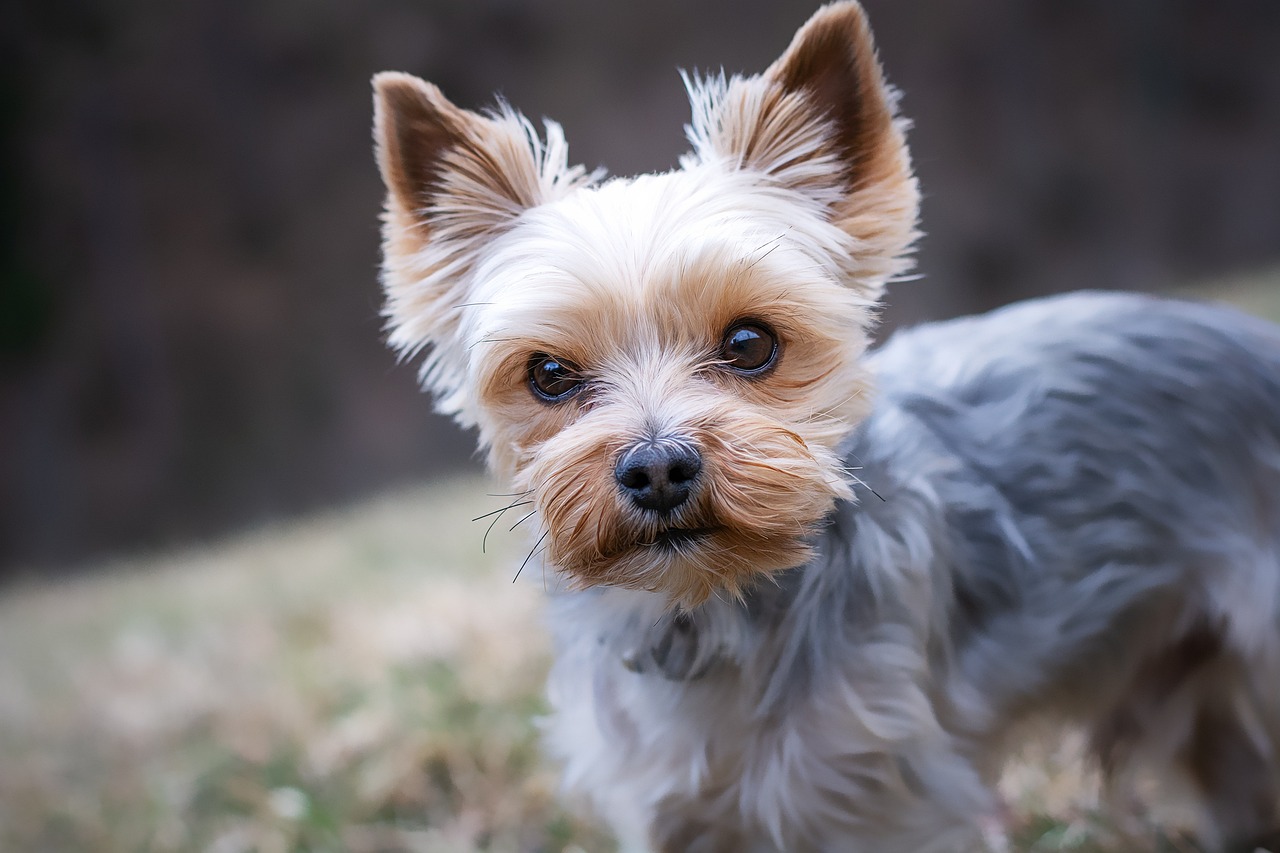
Grooming for Specific Breeds
When it comes to grooming, not all pets are created equal. Different breeds come with their own unique set of grooming needs, and understanding these can make a world of difference in keeping your furry friend healthy and happy. Just like a tailored suit fits better than off-the-rack clothing, customized grooming routines can ensure your pet looks its best while feeling comfortable. Whether you have a fluffy Poodle or a sleek Beagle, knowing how to cater to their specific requirements can save you time, money, and a lot of frustration.
For instance, long-haired breeds such as the Afghan Hound or the Shih Tzu require regular grooming to prevent their luxurious coats from becoming matted. These breeds typically need to be brushed several times a week, if not daily, to keep their fur tangle-free and healthy. On the other hand, short-haired breeds like the Labrador Retriever or the Boxer may not need as frequent grooming, but they still benefit from regular brushing to remove loose hair and dirt. It's a bit like comparing a high-maintenance sports car to a reliable sedan; both need care, but the approach is different.
To illustrate the differences in grooming needs, consider the following table that highlights some common breeds and their grooming requirements:
| Breed | Coat Type | Grooming Frequency | Special Considerations |
|---|---|---|---|
| Golden Retriever | Medium to Long | Weekly | Regular brushing to control shedding |
| Shih Tzu | Long | Daily | Regular trims to maintain coat length |
| Beagle | Short | Bi-weekly | Occasional baths to control odor |
| Poodle | Curly | Every 4-6 weeks | Regular grooming to prevent matting |
Now, you might be wondering, "How do I know what my specific breed needs?" The answer lies in observation and research. Each breed has its own set of characteristics that dictate grooming needs. For example, dogs with double coats, like Huskies, shed heavily twice a year and need a good de-shedding tool during those times. Meanwhile, breeds with a single coat, such as the Dachshund, require less frequent grooming but still need attention to their ears and nails.
In addition to brushing, it's essential to consider other grooming aspects such as nail trimming, ear cleaning, and dental care. These practices can significantly impact your pet's overall health. For example, a dog with long ears, like a Basset Hound, may require regular ear cleaning to prevent infections. Think of it as a mini spa day for your pet—keeping them clean and cared for goes a long way in enhancing their quality of life.
In summary, grooming is not just about aesthetics; it’s a vital part of your pet's health and well-being. By understanding the specific needs of your breed, you can create a grooming routine that works best for you and your furry companion. Remember, when in doubt, don't hesitate to seek guidance from a professional groomer who can provide tailored advice based on your pet's unique needs.
- How often should I groom my pet? - This depends on the breed and coat type. Long-haired breeds typically require more frequent grooming compared to short-haired breeds.
- Can I groom my pet at home? - Yes, with the right tools and techniques, many pet owners successfully groom their pets at home.
- When should I seek professional grooming services? - If your pet's coat is matted, they have specific grooming needs, or you’re unsure about how to handle certain grooming tasks, it’s best to consult a professional.
Long-Haired Breeds
When it comes to grooming, can be a real challenge, but they also come with their own unique charm. Think of your long-haired pet as a beautiful, flowing river; it requires regular maintenance to keep it looking pristine and healthy. These breeds, like the Persian cat or the Golden Retriever, often have luxurious coats that can easily become tangled and matted if not properly cared for. The key to keeping your furry friend looking fabulous lies in understanding their grooming needs and establishing a routine that works for both of you.
One of the most significant challenges of long-haired breeds is the tendency to mat. Mats can form quickly, especially in areas where the fur rubs against itself, like behind the ears or under the legs. To combat this, it’s essential to develop a regular grooming schedule. Ideally, you should aim to brush your long-haired pet at least two to three times a week, if not daily. Not only does this help prevent matting, but it also promotes healthy skin by distributing natural oils throughout the coat.
When selecting tools for grooming, make sure to invest in a good quality brush designed for long hair. A wide-toothed comb can also be beneficial for detangling knots without pulling on your pet's skin, which can be uncomfortable for them. If you find a particularly stubborn mat, consider using a dematting tool or even seeking professional help to avoid hurting your pet. Remember, grooming should be a bonding experience, so take your time, speak gently, and reward your pet with treats and affection throughout the process.
Another essential aspect of grooming long-haired breeds is bathing. While you don’t need to bathe your pet excessively—doing so can strip the coat of its natural oils—regular baths every few months can help keep their coat clean and manageable. Use a gentle, pet-safe shampoo and make sure to rinse thoroughly to avoid any residue that could irritate their skin. After bathing, a good brushing session can help prevent tangles from forming as the coat dries.
Lastly, don’t forget about the importance of ear care and nail trimming. Long-haired breeds can be prone to ear infections due to their furry ears trapping moisture and debris. Make it a habit to check and clean their ears regularly, using vet-approved cleaning solutions. As for nails, keeping them trimmed is crucial to prevent discomfort and potential injury. If you're unsure about how to trim nails safely, consider asking a professional groomer for guidance.
Here are some common questions pet owners have regarding the grooming of long-haired breeds:
- How often should I groom my long-haired pet? Aim for at least two to three times a week, or daily if possible.
- What tools do I need for grooming? A quality brush, wide-toothed comb, and dematting tool are essential.
- Can I bathe my long-haired pet frequently? Avoid excessive bathing; every few months is usually sufficient.
- How can I prevent mats in my pet’s coat? Regular brushing and using the right tools can help prevent matting.
Short-Haired Breeds
When it comes to grooming, might seem like a breeze compared to their long-haired counterparts. However, don’t let their sleek coats fool you; these pets still require a bit of TLC to keep them looking and feeling their best. Just like a well-tailored suit, a short-haired coat needs regular maintenance to ensure it stays shiny and healthy. So, what should you keep in mind when grooming your short-haired friend?
First off, while short-haired breeds typically shed less fur, they still need regular brushing to remove dead hair and distribute natural oils throughout their coat. This not only helps in maintaining a lustrous sheen but also minimizes the amount of fur that ends up on your furniture and clothes. Aim to brush your short-haired pet at least once a week. A simple rubber grooming glove or a soft-bristle brush can work wonders in loosening up that dead hair while providing a gentle massage that your pet will love.
Another essential aspect of grooming short-haired breeds is bathing. Unlike long-haired breeds that might need frequent washes to prevent matting, short-haired pets can get away with a bath every few months, or when they get particularly dirty or smelly. Use a high-quality pet shampoo that suits their skin type to avoid irritation. Just remember, too many baths can strip their skin of natural oils, leading to dryness and discomfort.
Moreover, don't forget about their ears and teeth! Regular ear cleaning is vital, especially for breeds prone to ear infections. A gentle wipe with a damp cloth can help keep those ears clean. Meanwhile, dental hygiene is just as important; brushing your pet's teeth a few times a week can prevent plaque buildup and keep their breath fresh. If your short-haired breed has a particularly stubborn plaque problem, consider consulting with a professional groomer or veterinarian for recommendations.
While short-haired breeds are generally easier to manage, there are still signs that indicate it might be time to call in a professional. If you notice excessive shedding, skin irritations, or if your pet seems uncomfortable during grooming, it’s best to seek expert help. A professional groomer can offer specialized treatments and advice tailored to your pet's specific needs.
In summary, short-haired breeds may not require the same level of grooming as long-haired ones, but they still need regular care to stay healthy and happy. By incorporating simple grooming routines into your schedule, you can ensure your furry friend remains comfortable and looking fabulous. After all, a happy pet makes for a happy home!
- How often should I groom my short-haired dog? It's recommended to brush them at least once a week to keep their coat healthy and shiny.
- Can I bathe my short-haired pet too often? Yes, bathing too frequently can strip their skin of natural oils. A bath every few months is usually sufficient.
- What tools do I need for short-haired grooming? A rubber grooming glove or soft-bristle brush, pet shampoo, and ear cleaning wipes are essential tools.
- When should I consider professional grooming? If you notice excessive shedding, skin issues, or if your pet becomes uncomfortable during grooming, it’s time to consult a professional.
Frequently Asked Questions
- What are the benefits of DIY grooming for my pet?
DIY grooming can save you money and allow you to bond with your pet. It also helps you monitor your pet's health closely, as you’ll notice any changes in their skin or coat while grooming.
- What essential tools do I need for grooming at home?
To start grooming your pet at home, you’ll need a good quality brush suitable for your pet’s coat type, clippers for trimming, and pet-safe shampoos. Don’t forget nail clippers and ear cleaning solutions!
- How do I choose the right brush for my pet?
Choosing the right brush depends on your pet's coat type. For example, long-haired breeds benefit from slicker brushes, while short-haired breeds do well with bristle brushes. Always consider your pet's comfort during brushing!
- What techniques should I use when brushing my pet?
Start by gently brushing in the direction of hair growth. Use short, smooth strokes to avoid pulling on their fur, and take breaks to keep your pet comfortable. Regular brushing can also help strengthen your bond!
- How often should I clean my pet's ears and teeth?
It's recommended to clean your pet's ears at least once a month and brush their teeth several times a week. Regular care prevents infections and dental issues, keeping your furry friend healthy and happy!
- When should I consider professional grooming services?
If your pet has matted fur, needs a complex haircut, or shows signs of distress during grooming, it’s time to call a professional. They have the experience and tools to handle tough situations safely.
- What are the specific grooming needs for long-haired breeds?
Long-haired breeds require more frequent grooming, typically every few days, to prevent matting and tangles. Regular brushing and professional grooming every few months can help maintain their beautiful coats.
- Do short-haired breeds need grooming too?
Absolutely! Short-haired breeds still benefit from regular brushing to remove loose fur and skin debris. A good grooming routine can prevent shedding and keep their coat healthy.

